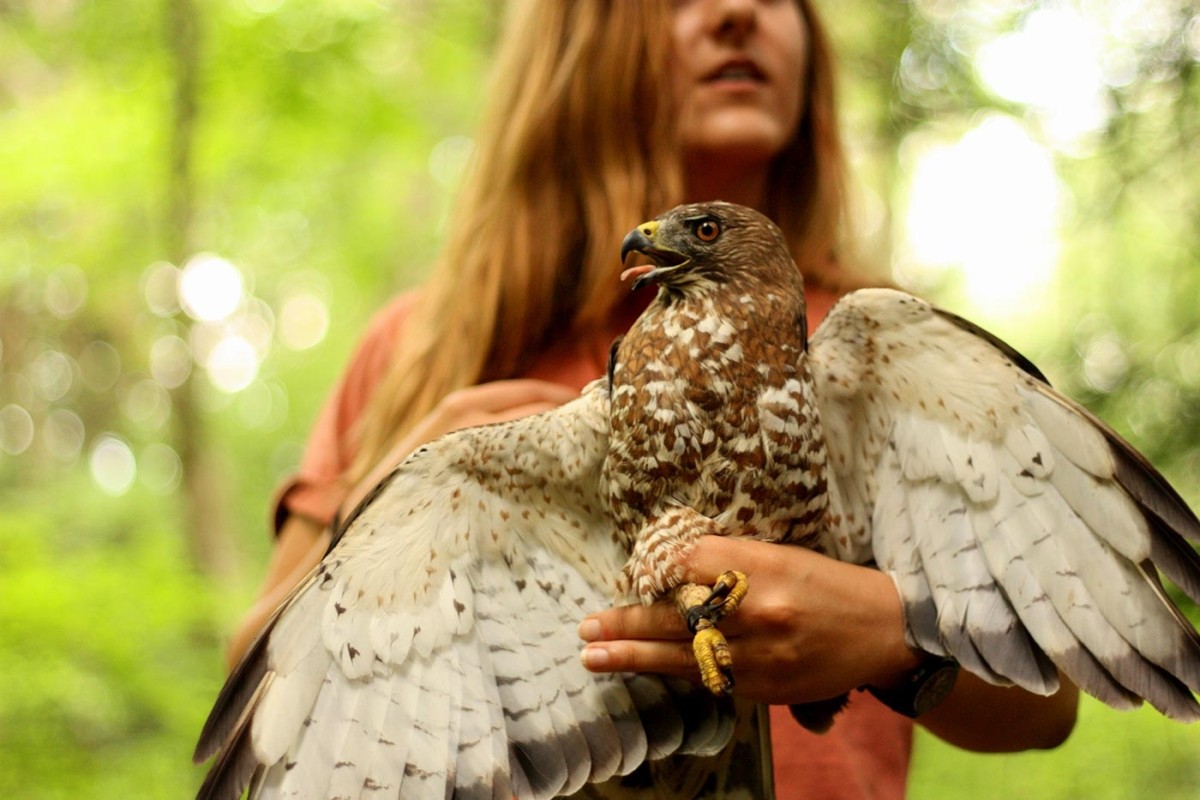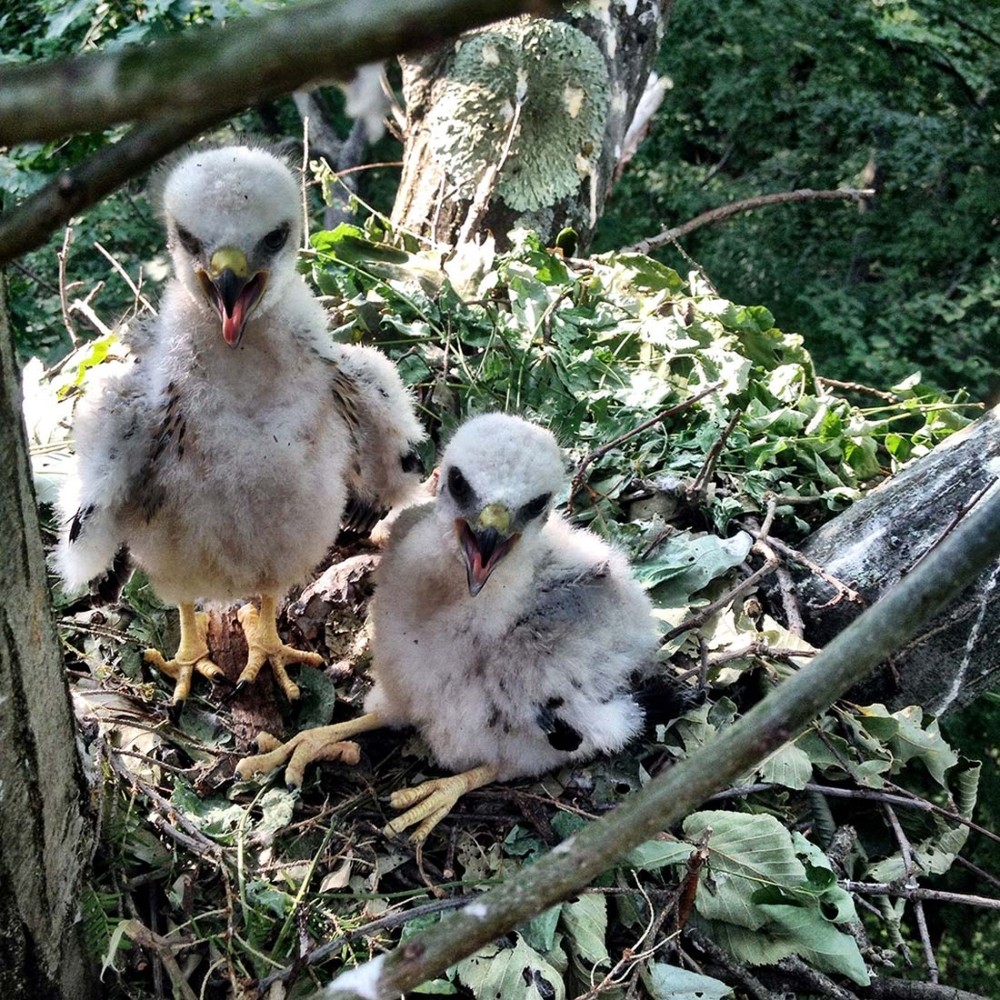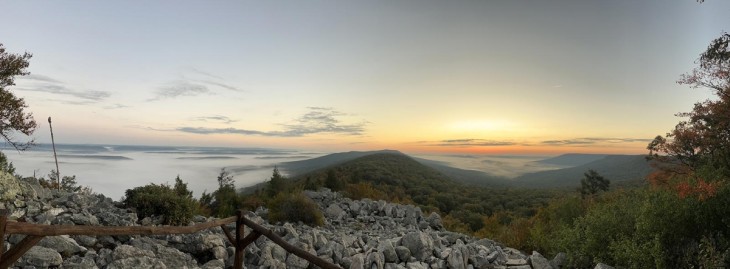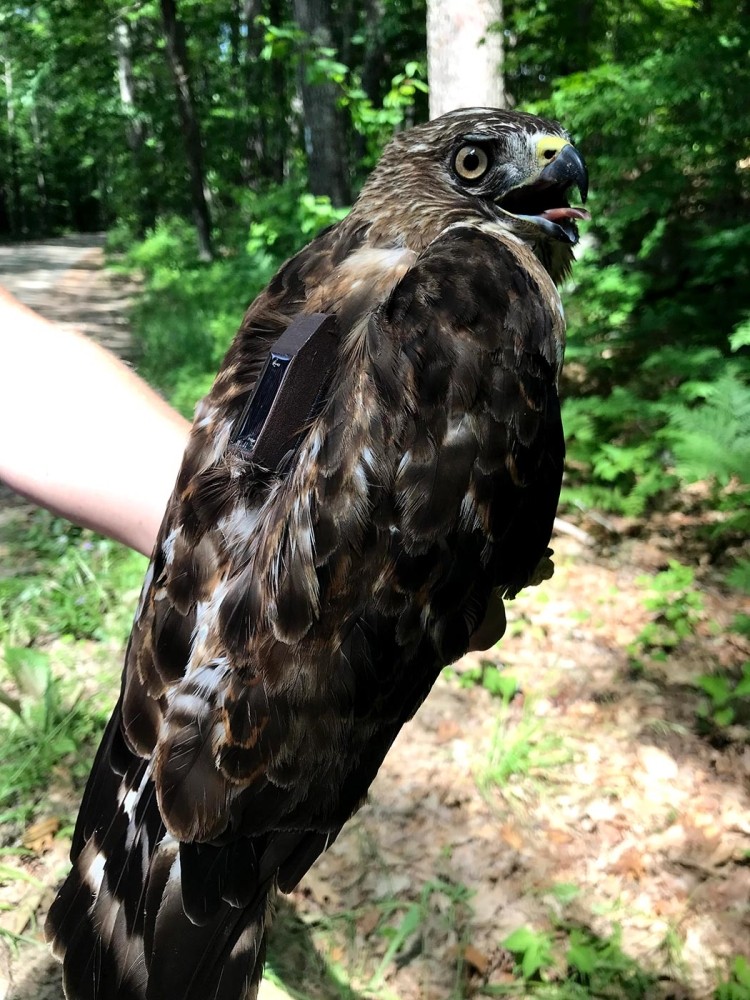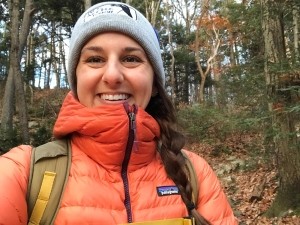
About 11 years ago, Rebecca McCabe began volunteering at Hawk Mountain Sanctuary in Kempton, Pennsylvania, as a college biology student. After completing her studies, then earning a master’s degree in biology and a PhD in natural resource sciences, she returned to Hawk Mountain and now works full-time as a research biologist, studying and working to conserve birds of prey. That work includes the annual fall migration count at the sanctuary’s hawk watch, which is in full swing this time of year.
During the last year of my undergraduate studies, I had an amazing professor, Dr. John Wallace, who told me that if I wanted to get a job as a biologist, I needed to get hands-on experience. He encouraged me to volunteer with local wildlife and conservation organizations, including Hawk Mountain Sanctuary, which was founded in 1934 and is the oldest and largest member-support raptor conservation organization in the world. Dr. Wallace had been an intern at Hawk Mountain during the late 1980s, and he introduced me to one of the sanctuary’s biologists, Dr. Laurie Goodrich. I vividly remember my first time driving up to Hawk Mountain’s visitor center, surrounded by forest on either side of the road. I instantly felt a sense of excitement and I had a really good feeling about the place. I started volunteering, and then later completed an independent study monitoring a broad-winged hawk nest at the sanctuary. This was my introduction to the bird world, more specifically the raptor world, and to doing field work. I was hooked.
At the time, Hawk Mountain was looking to start a full annual cycle research project on broad-winged hawks, and they asked if I would like to join the team as a master’s student. I of course said yes and came on as a graduate student and as a Conservation Science Trainee in the spring of 2014. It was an exciting time for me – living on the mountain, immersed in my first major research project, and getting to live and work with other passionate people from around the globe. My trainee class included people from The Gambia, Taiwan, Argentina, Chile, and the USA. The cultural component was amazing – to live here amongst others of different age ranges and life experiences, but all united in that we care about wildlife and the natural world. It’s a unique space to be in, a very special experience – in addition to the science and the research. Hawk Mountain’s Conservation Science Traineeship program goes back to the late 1970s and has trained over 500 people – 60 percent female, 40 percent male – from more than 75 countries. Trainees live on site and participate in the sanctuary’s research and education projects, the migration count, engage with volunteers and the public, and have a weekly seminar series on raptor biology, statistics, and GIS.
The focus of my master’s research was broad-winged hawk nesting ecology. Based on data from the two Pennsylvania Breeding Bird Atlases, which suggest broad-winged hawk nesting was declining in the state of Pennsylvania, we set out to learn more about their natural history and to see if we could determine any causes for the nesting declines. We looked at nest success, what prey they were delivering to their nestlings, how much time adults spent at the nest, the different habitat types they nested in, and so much more. The findings from this study were later published in the Journal of Raptor Research (McCabe et al. 2019). Because the project was multi-layered, we put transmitters on the hawks to see if different populations of broad-wings were wintering in different areas. We were able to use this really cool tech that could fit on this fairly small bird and watch them go these incredibly long distances.
I completed my master’s at East Stroudsburg University in 2016, and then went on to pursue a PhD studying the winter ecology of snowy owls at McGill University in Québec, Canada. I am a first-generation college graduate, and I didn’t set out to study biology or to earn a graduate degree. The master’s opportunity came, and it wasn’t planned. And it was the same with my PhD – an opportunity came, and I went for it. I tell younger students that you don’t have to have everything planned out when you start college, but to keep an open mind and follow the opportunities that present themselves. If something comes up, and you feel good about it, then do it. You never know where that’s going to lead.
In 2021, I joined the staff at Hawk Mountain as a research biologist. As a research biologist in our conservation science department, I am continuing to study broad-winged hawks and snowy owls, as well as analyzing Hawk Mountain’s long-term American kestrel nest box data. This is my first season counting for our annual fall migration count, which runs from August 15 through December 15. We recently had our push of broad-winged hawks come through in September, and now we’re in accipiter season. I had an excellent day on the lookout last Tuesday, with 125 sharp-shinned hawks and an end-of-the-day peregrine falcon going by. It’s prime hawk watching time, so be sure to get out and visit your local hawk watch! Hawkcount.org is a great resource for anyone interested in finding their local hawk watch. You can click on a province or a state and see where the hawk watches are in your area, and many of them have live count data, so you can see what birds are migrating today.
Studying forest-nesting raptors can be challenging at times, as many are quite elusive during the breeding season. There are many cases where we – staff, trainees, and volunteers – come back from a few hours in the field without having seen or heard the hawks. But we will all tell you that although it can be frustrating, it’s never a bad day, because we get to walk in the woods. For me, the time spent in the forest searching for nests is both exciting and restorative. My mind focuses on what is in front of me. I notice the small fiddlehead ferns poking out of the damp soil beneath my feet. I listen to the calls of the ovenbirds and try to spot one on the forest floor. I sit on a log and wait for the deer to cross my path and watch as the chipmunk zips by and into its hole.
With every new nest and every new bird, there’s something unique to report. I’ve been studying broad-winged hawks for 10 years now, and anytime I think I’ve figured it out, I’m surprised by a different behavior or new observation. But this is what makes research so exciting! You’re always on the edge of your seat wondering what they’re going to do next. For example, when we started tracking broad-winged hawks with telemetry, we thought that birds from the same breeding population would winter in the same region. However, we found that there doesn’t seem to be a pattern – birds nesting in the same state, within a few kilometers of each other, can winter more than 1,500 kilometers apart.
Another cool finding that came from our broad-winged hawk tracking study is that birds are showing pre-migratory movements. Some of the adult females will leave the nest around the end of July/early August, while their young are still hanging around the nest and learning to hunt. We’ve documented pre-migratory movements that range from 50 to 500 kilometers. For example, we tagged an adult female nesting in Hancock, New Hampshire, who departed from her nest on August 4, a few weeks after her two young fledged. She then traveled more than 500 kilometers north to La Tuque, Québec, before starting her fall migration on September 14. She then migrated down to Bolivia where she wintered for a few months, before migrating north and back to New Hampshire. When you think about a bird who is a long-distant migrant, and already travels thousands of kilometers during migration – what is the benefit to making those pre-migratory movements? Why do some birds do it and others don’t? And why are they going to these locations that are so far away from their nest sites? Are these sites their natal grounds (where the hawk was born)? Are there predictable resources here for the hawks to feed before making their journey south? These are all exciting questions that we hope to uncover as we continue to study this forest raptor.
We are excited to be going into our 10th year of the project and to be expanding our work into other regions and with other passionate folks. In more recent years, we’ve teamed up with raptor bander Larry Fischer studying nesting broad-winged hawks in Connecticut, and Phil Brown and the Harris Center for Conservation Education in New Hampshire. We’ve just partnered with Vermont Institute of Natural Science (VINS) in Vermont, and we are working with raptor banders Charlotte England and Malcolm Wilson in Ontario, Canada, and veterinarian Dr. Guy Fitzgerald in Québec, Canada. To learn more about our broad-winged hawk research, visit the project page on the Hawk Mountain website, and to follow the tracked birds check out our tracking map.


